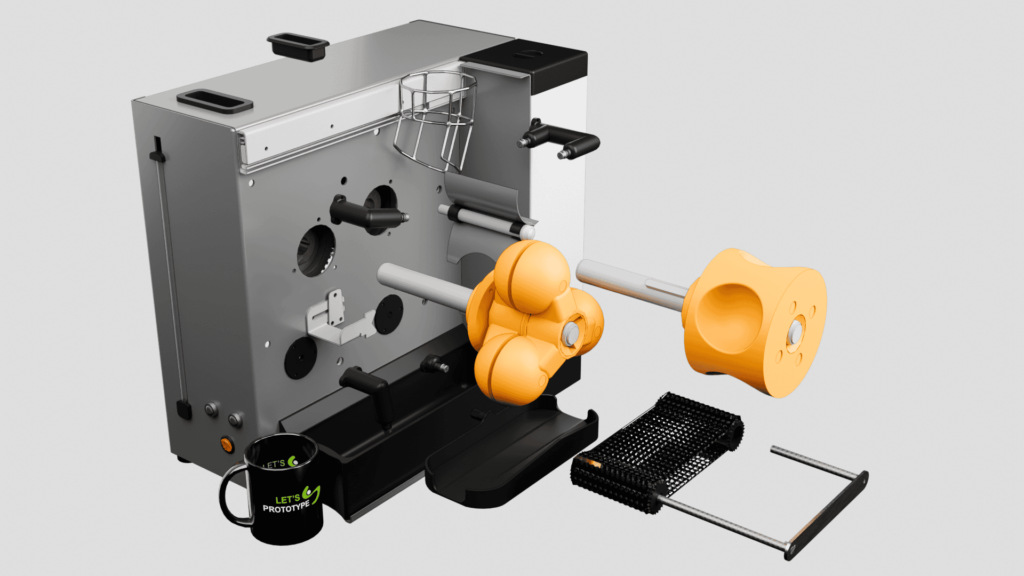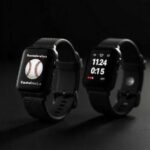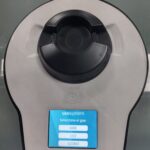OTA is a method for remotely updating the control software of an electronic circuit.
To better understand the usefulness of OTA in prototypes and products, you need to understand that there are two types of electronic products: Smart electronic products and non-smart (or "dumb") electronic products.
I know! It’s true that these definitions aren't entirely scientific, but I’m sure they’ll be useful as an introduction to the definition of the OTA method and its main advantages.
Non-smart electronic products: The term non-smart electronic products refers to electronic devices whose operation does not require programmed logic. These are products that can perform their functions using very simple circuits, yet provide features we value in our daily lives. For example, the most popular fans on the market have a simple circuit to manage the electrical current, an on/off switch, and a motor that receives power to spin the blades and generate the airflow that cools us down.
Smart electronic products: In contrast, smart electronic products, in addition to having these basic elements, require programmed logic to perform their functions. These electronic devices need the coexistence of two major components to operate: the hardware (electronic components and peripherals) and the firmware, which refers to the programming code that coordinates the operation of the smart electronic product. For example: mobile phones, televisions, and computers are products that require both components to function properly.
Many innovative electronic products on the market, which have proven to be great business opportunities, are precisely the result of transforming non-smart electronic products into smart electronic products.
For example, conventional household refrigerators do not require firmware code to control the components that enable their basic cooling functions. However, smart refrigerator versions are now widely available on the market. These can be controlled from a mobile phone, use smart sensors to adjust their operation based on door-opening cycles and internal conditions, and some are even capable of performing self-diagnostics and sending alerts to our phones.
Of course, adding these functions does require the integration of microcontrollers and firmware solutions capable of controlling the product and defining what we know as business logic.
Before the 2000s, smart electronic products already existed—mobile phones, microwaves with digital displays, digital printers, televisions, and more. Therefore, the manufacturing of all these products has required the installation of custom-developed control software (firmware) for each model of smart electronic product on the market.
All electronic products are subject to improvements. Many products have been released to the market with issues that were not identified during the testing processes.
These cases have represented extremely high costs for manufacturers, as for decades they have been forced to maintain large after-sales technical support services whose role is to: open the product, connect a cable, and install the new firmware versions to correct the errors.
Can you imagine the inconvenience for customers? The extremely high costs of staffing structures? The damage to brand reputation?
The development and availability of telecommunications networks have enabled the growth and democratization of the OTA method (Over-The-Air). The use of OTA in electronic products allows for firmware updates that control these products to be performed remotely—without cables, without technical knowledge, and without the need to open the product.
Therefore, the implementation of OTA has a direct impact on the costs associated with after-sales technical services for nearly all brands that launch smart electronic products to the market.
Nowadays, you interact with devices that are constantly updated via OTA. This way, you benefit from product improvements, new features, and technical issue resolutions—easily and without incurring any cost.
If you're an inventor and plan to create an innovative electronic product, I'm sure you're starting to see the advantages of OTA for the future of your product as an absolute necessity.
One of the common concerns among our inventor clients and innovation departments of large companies is the risk that their products may be copied by manufacturers themselves in the future.
Despite patents or other methods for protecting a product’s intellectual property, there’s one truth: if your product is good, someone will try to copy it. That’s why one of your main goals during the creation of an electronic prototype should be to take measures that minimize the risk of your product being copied.
The implementation of OTA, in addition to the advantages mentioned above, can also be considered a method for protecting electronic products—and let me explain how we've done it at Let’s Prototype.
Imagine we develop a wearable device—for example, a smartwatch designed for playing padel. A watch capable of identifying padel strokes, tracking points, and alerting you to potential health risks while you play.
This special smartwatch for padel players will require various electronic components, smart sensors, and of course, a microcontroller and firmware (control software) that manages all the data and synchronizes with your match.
Of course, it will be an electronic device subject to improvements and likely to have multiple issues that we’ll only discover once it’s used by thousands of padel players. Including the ability to update the firmware via OTA will allow players, with just a couple of taps on the smartwatch’s touchscreen, to always have the latest and most corrected version of the firmware.
Let’s now think about the intellectual property protection of this product. The innovation behind smart padel wristbands lies in the mathematical models and artificial intelligence. As you can imagine, these logics are defined within the device’s own control firmware. Therefore, in this case, a patent would have limited usefulness.
To protect the innovation of this electronic product, we could use two strategies—although I’ll tell you in advance that the first one is not highly recommended.
Strategy 1: Build your own factory for smart padel wristbands. I’m sure you’ll agree with me that this is a very slow path and, above all, requires astronomical investments.
Perhaps, over the years and with a lot of money invested, you might eventually manage to manufacture wristbands with the same quality as those already produced in China—but with costs that will hardly be as competitive.
Strategy 2: Establish a strategy for installing and updating firmware via the OTA method.
On one hand, you’ll be able to use existing production lines in China. You’ll reach the industrial production stage more quickly and at a lower cost compared to Strategy No. 1.
Once the units are manufactured, you can provide the Chinese manufacturers with a very basic control software (firmware). This firmware will not include any of the innovative features you want to protect. Therefore, once the wristbands are assembled, the manufacturers will connect a cable and install a limited version of the firmware. This version will be enough to verify that the electronic components are working properly—nothing more.
Once the wristbands reach the end customers, in their packaging and fully sealed, the screen will display the steps for the user to update the firmware via OTA, which is what actually enables the product to be used for playing padel with all its features.
- Manufacturers will never have access to the final firmware, which is what enables the electronic product to deliver its innovative features.
- Customers will never be able to access the software that controls their wristbands.
- Customers will always be able to use their wristband with the latest available firmware.
- The inventor saves costs on after-sales services and can continuously improve the product without generating additional costs for customers.
Many times, inventors—due to limited investment or lack of knowledge—entrust the development of their innovative electronic products to beginners. The lack of experience and strategic vision required to create an electronic product can doom your invention to failure.




